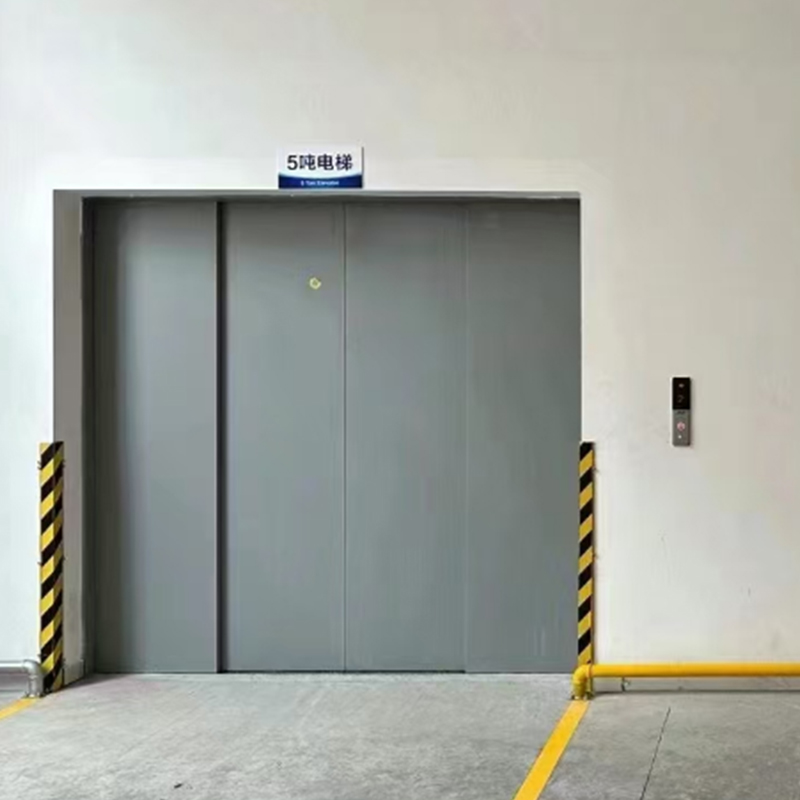
Why Should Industries Rely on a Traction Gantry Elevator Instead of Traditional Lifting Systems?
Posted by Admin | 15 Sep
Introduction to Traction Gantry Elevator
The Traction Gantry Elevator represents a specialized category of lifting equipment designed to handle the heaviest loads in some of the most demanding industrial environments. Unlike conventional elevators confined to shafts or cranes restricted by rail-mounted tracks, this system integrates a traction-driven hoisting mechanism with a mobile gantry structure. The result is a highly adaptable lifting solution capable of vertical movement, precise load control, and stability in confined or open industrial spaces.
Its main components include a traction motor, steel ropes or chains, a robust control system, and the gantry frame itself. Together, they form a system that combines the accuracy of an elevator with the mobility of a gantry, making the Traction Gantry Elevator a cornerstone in modern industrial logistics.
Advantages of Using a Traction Gantry Elevator
Enhanced Safety Features
Industrial lifting demands safety as the top priority. The Traction Gantry Elevator is engineered with layered protection systems. Overload sensors prevent operation when the load exceeds capacity. Emergency stop mechanisms immediately halt the system when hazards arise. Anti-collision sensors allow safe operation even in dense industrial layouts. These design elements ensure a safer working environment and reduce accident risks.
Increased Efficiency and Productivity
Speed and accuracy are vital for operations in construction, manufacturing, and logistics. The Traction Gantry Elevator operates at higher lifting speeds than hydraulic or screw-driven systems. Precise positioning capabilities allow workers to align machinery or heavy materials with minimal error, reducing downtime and boosting throughput.
Cost-Effectiveness
Though the initial investment can be significant, long-term savings are clear. Lower maintenance requirements, reduced energy consumption through regenerative braking systems, and extended service life make this elevator a financially sound choice. The return on investment is accelerated by lower labor costs and increased productivity.
Space Optimization
Traditional elevators often require dedicated shafts, which take up valuable building space. The Traction Gantry Elevator, with its compact gantry structure, can be installed in constrained environments. This adaptability makes it ideal for warehouses, factories, and construction sites where every square meter matters.
Applications Across Industries
Construction
These elevators transport steel beams, pre-cast slabs, and glass panels with precision. They accelerate high-rise construction by lifting materials directly to the required floor without the delays of manual handling.
Manufacturing
Within factories, Traction Gantry Elevators move heavy machinery and assist in assembly line operations. By precisely positioning sub-assemblies or large components, they streamline production and reduce manual lifting.
Warehousing and Logistics
In warehouses, these elevators integrate with automated storage and retrieval systems. They transfer pallets vertically across storage racks and loading areas, reducing manual intervention and improving operational safety.
Mining
Underground mines rely on robust lifting systems. The Traction Gantry Elevator is well suited for lowering equipment, transporting ore samples, and delivering supplies into shafts. Its design withstands harsh underground conditions, providing reliable service.
Shipbuilding
Ship construction involves positioning massive hull sections and engine blocks. These elevators ensure precise alignment and placement of components critical to structural integrity.
Key Features and Technologies
Advanced Control Systems
Programmable Logic Controllers (PLCs) manage elevator movement with accuracy. Remote diagnostics allow real-time monitoring, reducing downtime. Integration with centralized logistics systems enables automated workflows across entire facilities.
High-Strength Materials
The gantry frame is built from alloy steels designed for strength and longevity. Corrosion-resistant coatings extend lifespan even in humid or saline conditions such as shipyards and mines.
Customization Options
Load capacities can be tailored from several hundred kilograms to multiple tons. Platforms may be resized, and special attachments like clamps or hooks make the Traction Gantry Elevator adaptable to a range of cargo types.
Comparison: Traction Gantry Elevator vs Traditional Lifting Systems
| Feature | Traction Gantry Elevator | Hydraulic Elevator | Overhead Crane |
|---|---|---|---|
| Load Capacity | Very High | Medium | Very High |
| Precision of Positioning | Excellent | Moderate | Moderate |
| Space Requirements | Compact, flexible | Requires shaft | Requires rails |
| Energy Efficiency | High (regenerative) | Moderate | Moderate |
| Maintenance Needs | Low | High | Medium |
| Adaptability Across Sites | High | Low | Low |
This comparison highlights the superiority of the Traction Gantry Elevator for industrial versatility, efficiency, and space optimization.
Case Studies
Warehouse Automation
A large logistics hub integrated a Traction Gantry Elevator to move pallets across multiple levels. Average transfer times dropped from 15 minutes to under 5, boosting throughput by 40 percent and lowering workplace accidents. Within two years, the system paid for itself through labor savings and increased capacity.
Shipbuilding
Replacing an outdated crane, a shipyard adopted a Traction Gantry Elevator for hull assembly. Precise alignment reduced welding errors and cut assembly time per ship by 25 percent. This directly improved productivity and structural reliability.
Maintenance and Safety
Regular Inspections
Daily checks include examining ropes or chains, testing emergency stops, and verifying overload sensors. Monthly inspections involve alignment checks, lubrication, and system calibration.
Preventative Maintenance
Scheduled servicing extends service life. Lubricating moving parts, replacing worn components, and ensuring secure electrical connections prevent costly breakdowns.
Safety Protocols
Operators must be trained and certified. Loads must never exceed rated limits. Clear warning signs, restricted access zones, and safety drills further ensure workplace safety.
Future Trends in Traction Gantry Elevator Technology
Integration with AI and IoT
IoT sensors will provide real-time data on stress loads, vibration, and environmental conditions. AI systems will predict failures, optimize performance, and even self-correct before breakdowns occur.
Full Automation
Future gantry elevators will synchronize with conveyor belts, robotic arms, and autonomous vehicles. Facilities will function as integrated ecosystems with minimal human intervention.
Sustainable Design
Newer models will prioritize eco-friendly composites, lightweight alloys, and enhanced regenerative braking to reduce energy use. Recycling programs and modular designs will minimize environmental impact.
Sustainability Considerations
| Factor | Conventional Systems | Traction Gantry Elevator |
|---|---|---|
| Energy Efficiency | Moderate | High |
| Material Use | Heavy steel only | High-strength alloys + composites |
| Maintenance Waste | High | Low |
| Expected Service Life | Medium | Long |
The Traction Gantry Elevator clearly supports more sustainable industrial practices by combining efficiency with longevity.
Conclusion
The Traction Gantry Elevator is not just a machine but a transformative industrial solution. It provides unmatched safety, efficiency, adaptability, and cost-effectiveness. From construction and shipbuilding to warehousing and mining, it outperforms traditional systems by offering compact design, precision, and sustainability.
As industries move toward automation and environmentally conscious practices, the Traction Gantry Elevator will play an increasingly central role. With AI integration, IoT monitoring, and energy-efficient designs, it represents the future of heavy-duty vertical lifting—delivering productivity, reliability, and sustainability for decades to come.

-
 Founding Road, Qidu Linhu Economic Zone, Wujiang City, Jiangsu Province, China
Founding Road, Qidu Linhu Economic Zone, Wujiang City, Jiangsu Province, China
-
 [email protected]
[email protected]
-
 +86 17701557926/+86 0512-63818375
+86 17701557926/+86 0512-63818375


 En
En English
English русский
русский Español
Español عربى
عربى





